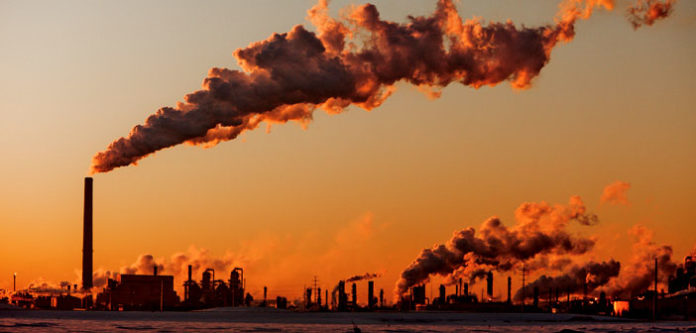
In April, the American Lung Association released the 2015 State of the Air report, which revealed that, although air quality in the United States is improving, roughly half of the population live in areas where air pollution levels exceed the annual Environmental Protection Agency limits, making even breathing dangerous. Now, a study of air pollution in New England shows that the number of people at risk may be much higher — and the danger even greater than we thought. The findings, published in the journal Environmental Health Perspectives, reveal that exposure to fine-particle pollution is “unambiguously” associated with higher death rates, even when that pollution is well below the limits set by the EPA.
The health consequences of inhaling fine particulate matter—tiny airborne particles of chemicals, metals, soil, and dust—are well known. Inflammation, heart disease, respiratory illnesses, and early death have all been linked to air pollution exposure, and a recent study by the American Thoracic Society found that seven out of 10 doctors say pollution is contributing to more health problems among their patients.
The EPA counters these effects by imposing restrictions on acceptable particulate levels nationwide. Currently, the amount of fine particles present in the air cannot exceed 35 micrograms per cubic meter on any given day, or an average of 12 μg/m3 in a year. (For perspective, study author Liuhui Shi’s calculations show that, gathered together, 12 μg/m3 of fine particles would weigh about as much as a sesame seed on your morning bagel.)
Previous studies have focused on the link between pollution and health in America’s notoriously smoggy major cities, according to the authors. That comes at the expense of suburban and rural pollution levels, which are harder to monitor and have been largely overlooked. To create comprehensive estimates of pollution in both cities and rural areas, the researchers combined pollution estimates from land-based monitoring stations and satellite Aerosol Optical Depth measurements, which predict pollutions levels by measuring how much sunlight airborne particles prevent from reaching the ground.
While coverage from land monitors is limited to urban areas, the remote satellite data allowed researchers to observe particle levels in rural areas as well, making their results some of the first on pollution and health risks that are generalizable to populations outside of the big cities.
‘If we get rid of air pollution, it would be as good as curing a third of cancers’
The researchers compared pollution levels to health data from Medicare-covered New England residents aged 65 and up, and used statistical tests to assess both the short- and long-term mortality risks associated with air pollution exposure. The study found that for every 10 μg/m3 increase in particles over a short, two-day period, the risk of death increased by 2.14 percent for the study participants. Over a year-long period, every 10 μg/m3 increase in particulates increased mortality rates by 7.52 percent.
“That’s a big deal,” said senior study author Dr. Joel Schwartz, a professor of environmental epidemiology at the Harvard T.H. Chan School of Public Health and an associate professor of medicine at Harvard Medical School. “Cancer is probably the cause of 20 percent of all deaths in New England. So that means if we get rid of air pollution, it would be as good as curing a third of cancers.” And, he pointed out, while we don’t have a cure for cancer, we do have the technology to make significant reductions in air-pollution levels. Adoption of such technology, however, is often thwarted by financial concerns. “Now imagine someone saying: ‘We have a cure for lung cancer and breast cancer, but we will not use it because it will cost people money,’” he added. “No one would buy that.”
The takeaway, according to the researchers, is that the EPA needs to tighten its restrictions on air pollution even further, as current limits are not enough to protect public health. “Particulate air pollution is like lead pollution, there is no evidence of a safe threshold even at levels far below current standards, including in the rural areas we investigated,” said Schwartz. “We need to focus on strategies that lower exposure everywhere and all the time, and not just in locations or on days with high particulate levels.”
